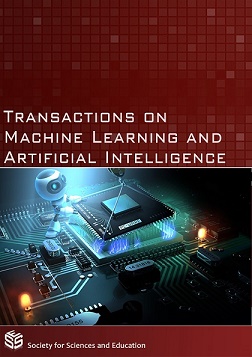WEB CIBERSECURITY - Danger of PHP Code Injection Vulnerability
DOI:
https://doi.org/10.14738/tmlai.85.9051Keywords:
Cloud Computing, Azure, Distance learning, WEB App, Virtual LabsAbstract
This work demonstrates that the use of laboratories for the development of curricular work in the area of information technology exclusively supported by cloud computing technology does not decrease the level of learning and assessment objects on the part of students. This scenario arose due to the need to interrupt face-to-face classes in physical laboratories due to the COVID-19 Pandemic. The study had as universe a master's degree in Computer Science.
References
(1) - NIXON, R.. (2018). Learning PHP, MySQL & JavaScript: With jQuery, CSS & HTML5 (Learning PHP, MYSQL, Javascript, CSS & HTML5. O'Reilly Media
(2) - TATROE, K. (2020). Programming PHP: Creating Dynamic Web Page. O'Reilly Media.
(3) - WELLING, L. (2016). PHP and MySQL Web Development. Addison-Wesley Professional.
(4) - LOCKHART, J. (2015). Modern PHP: New Features and Good Practices. O'Reilly Media.
(5) - AJZELE, A. (2017). Mastering PHP 7: Design, configure, build, and test professional web applications. Packt Publishing.
(6) - POWERS, D. (2019). PHP 7 Solutions: Dynamic Web Design Made Easy. Apress.
(7) - SNYDER, C. (2010). Pro PHP Security: From Application Security Principles to the Implementation of XSS Defenses. Apress.
(8) - EDMUNDS, B. (2016). Securing PHP Apps. Apress.
(2) - TATROE, K. (2020). Programming PHP: Creating Dynamic Web Page. O'Reilly Media.
(3) - WELLING, L. (2016). PHP and MySQL Web Development. Addison-Wesley Professional.
(4) - LOCKHART, J. (2015). Modern PHP: New Features and Good Practices. O'Reilly Media.
(5) - AJZELE, A. (2017). Mastering PHP 7: Design, configure, build, and test professional web applications. Packt Publishing.
(6) - POWERS, D. (2019). PHP 7 Solutions: Dynamic Web Design Made Easy. Apress.
(7) - SNYDER, C. (2010). Pro PHP Security: From Application Security Principles to the Implementation of XSS Defenses. Apress.
(8) - EDMUNDS, B. (2016). Securing PHP Apps. Apress.
Downloads
Published
2020-10-30
How to Cite
Brandao, P. R. (2020). WEB CIBERSECURITY - Danger of PHP Code Injection Vulnerability. Transactions on Engineering and Computing Sciences, 8(5), 65–68. https://doi.org/10.14738/tmlai.85.9051
Issue
Section
Articles






